Art World
Sculptor Simone Leigh, Whose Towering Ceramic Forms Examine Black Female Subjectivity, Will Represent the US at the 2022 Venice Biennale
A Black woman has never represented the US at the prestigious exhibition.
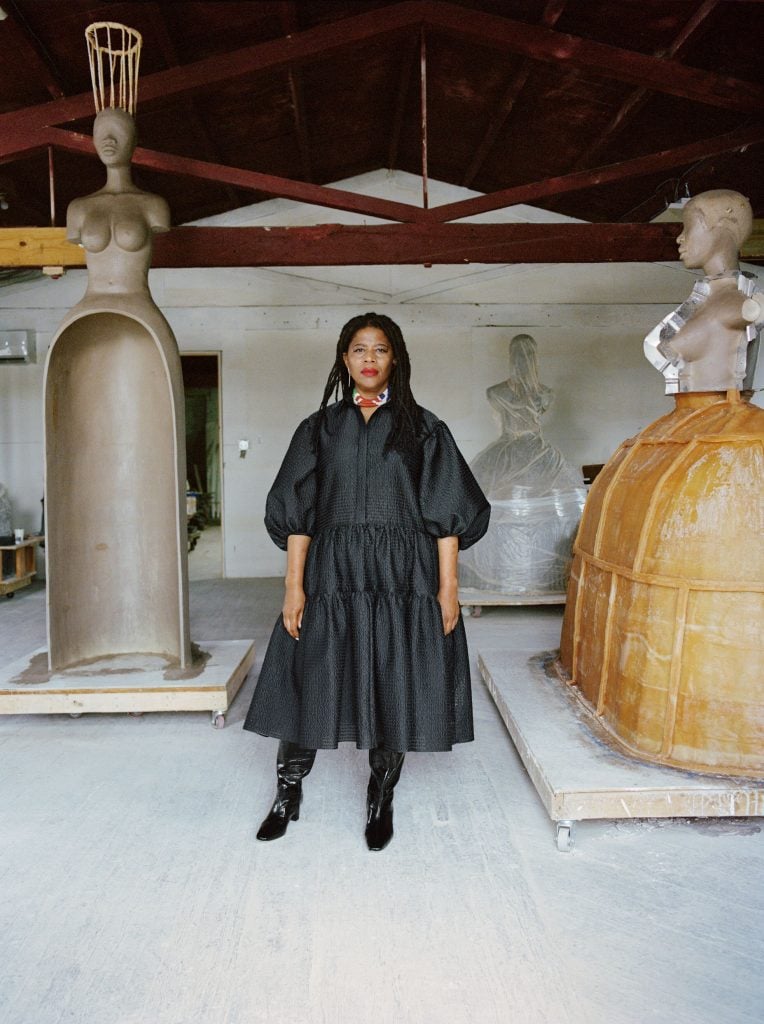
A Black woman has never represented the US at the prestigious exhibition.

Sculptor Simone Leigh, whose work exploring Black female subjectivity blends African art history, ethnographic research, and feminist and post-colonial theory, will be the US representative for the 59th Venice Biennale. The nation’s pavilion, set to open in April 2022, is being commissioned by the Institute of Contemporary Art, Boston, which is also staging the artist’s first museum survey show, scheduled for 2023.
Born in Chicago to Jamaican missionaries in 1967, Leigh will be the first Black woman artist chosen by the US for the international art exhibition.
“We already see that the pavilion is historically showing strong, compelling art and changing the narrative of history in terms of who is included and represented,” ICA director Jill Medvedow told Artnet News. “Simone Leigh falls into that fantastic trajectory.” The past two artists to represent the US, Martin Puryear and Mark Bradford, are both African American, and followed presentations from female artists Joan Jonas and Sarah Sze.
Leigh’s selection, Medvedow said, “disrupts 400-plus years of Black women being excluded from this global platform and from our history.”
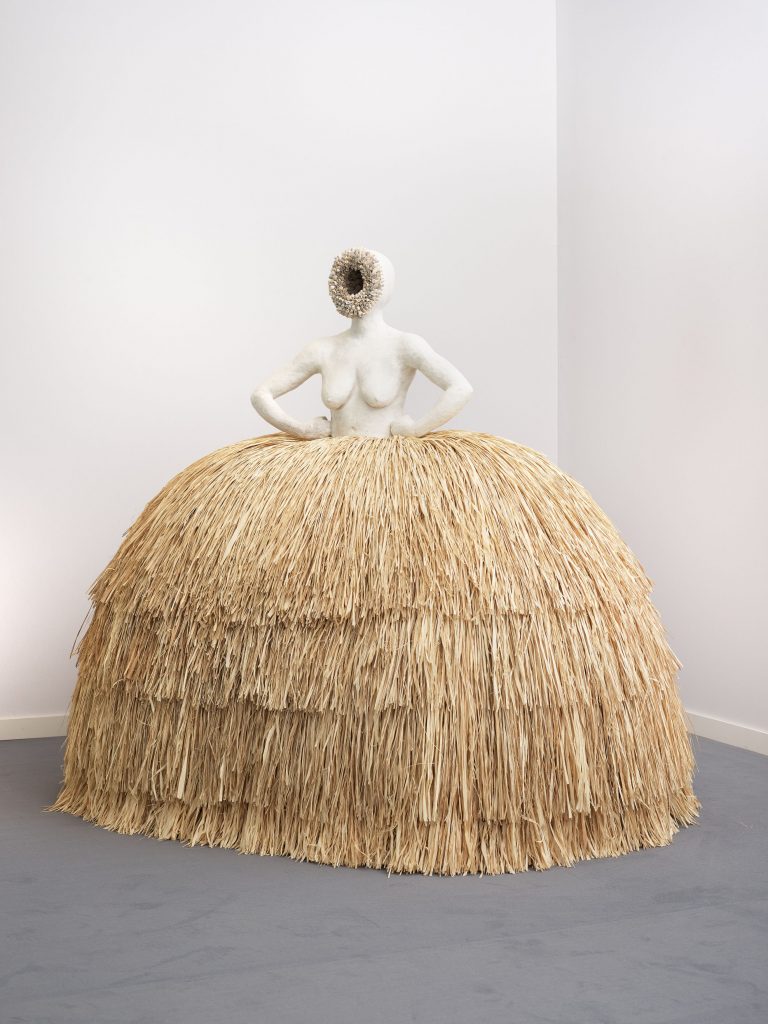
Simone Leigh, Las Meninas (2019). Photo by Farzad Owrang, courtesy of the artist and the Cleveland Museum of Art, ©Simone Leigh.
The ICA expects the exhibition will cost about $2 million, with a budget that includes a $375,000 award from the US State Department’s Bureau of Educational and Cultural Affairs, which selects the commissioning institution. The majority of the show will be dedicated to new sculptures and installations by Leigh. The objects will span the materials for which she has become known: bronze, ceramic, and raffia.
“For me, there is a sense of hope and uplift that I have in thinking about Simone’s work and the way she is focusing on and foregrounding Black feminist thought,” said ICA chief curator Eva Respini, who is organizing the pavilion. “It’s a kind of beacon in this moment.”
Leigh is an artist who is particularly accustomed to working large—she created the 16-foot-tall inaugural commission for New York’s High Line Plinth in 2019. “Her art really demands visibility,” Medvedow said. “It takes up space, and so much of it is incredibly solid.”
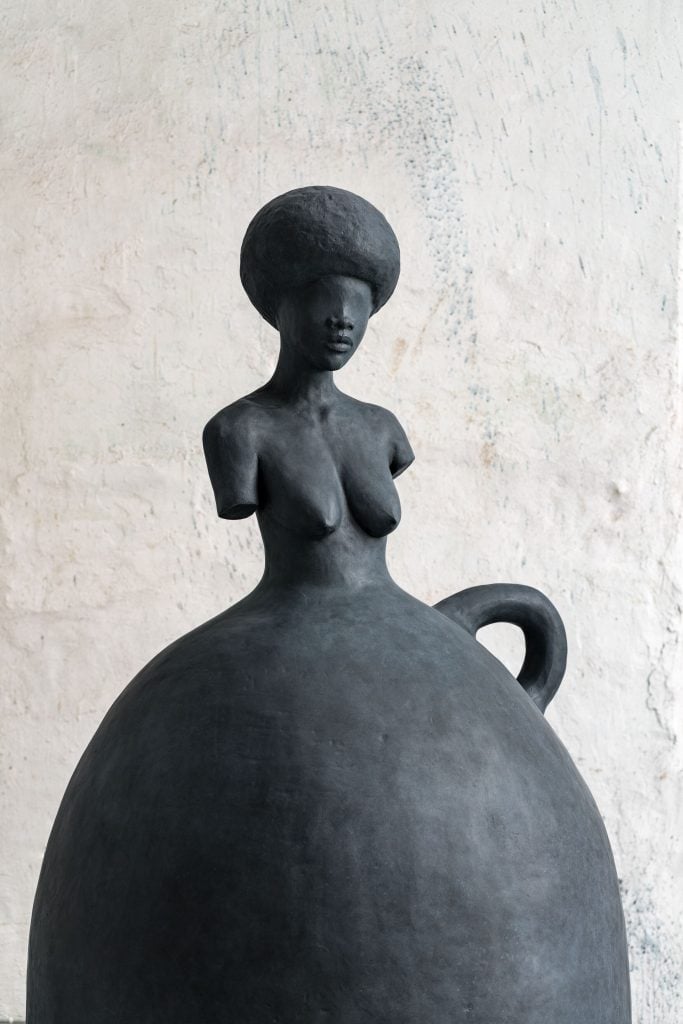
Simone Leigh, Jug (2019). Photo by David Heald, courtesy of the artist and the Solomon R. Guggenheim Foundation, ©Simone Leigh.
The upcoming biennale was originally planned for 2021, but had to be pushed back when the 17th international architecture exhibition was delayed a year due to the global health crisis. The schedule shuffle gives curators plenty of time to plan—which is especially appreciated given that US passport holders are currently prohibited from entering Italy.
“There’s a fair amount of uncertainty about when we’ll be able to go to Venice,” said Medvedow, who expects that much of the preliminary planning will have to take place virtually. “We have all honed our skills at adaptability and resilience since March and I imagine this project will exemplify that.”
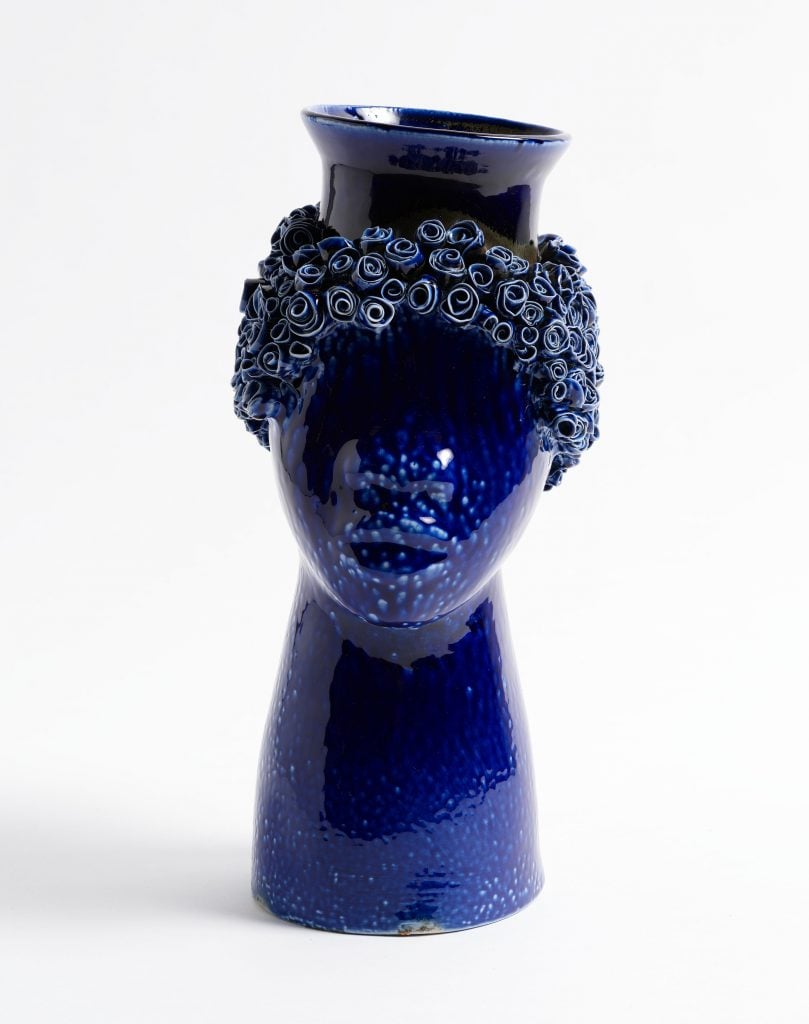
Simone Leigh, 107 (Face Jug Series) 2019. Photo by Farzad Owrang, courtesy of the artist and a private collection, ©Simone Leigh.
The biennale’s international exhibition is set to be helmed by Cecilia Alemani, director and chief curator of New York’s High Line Art, who also commissioned Leigh’s High Line commission, Brick House. Part of the artist’s “Anatomy of Architecture” series, which features female figures informed by architectural styles from West Africa and the American South, it remains on view in the popular park through next spring.
After being ignored for decades by the mainstream art establishment, Leigh’s profile has risen sharply in recent years. She won the Studio Museum in Harlem’s $50,000 Joyce Alexander Wein Artist Prize in 2017, and the prestigious $100,000 Hugo Boss Prize—which comes with a solo show at New York’s Solomon R. Guggenheim Museum—in 2018.
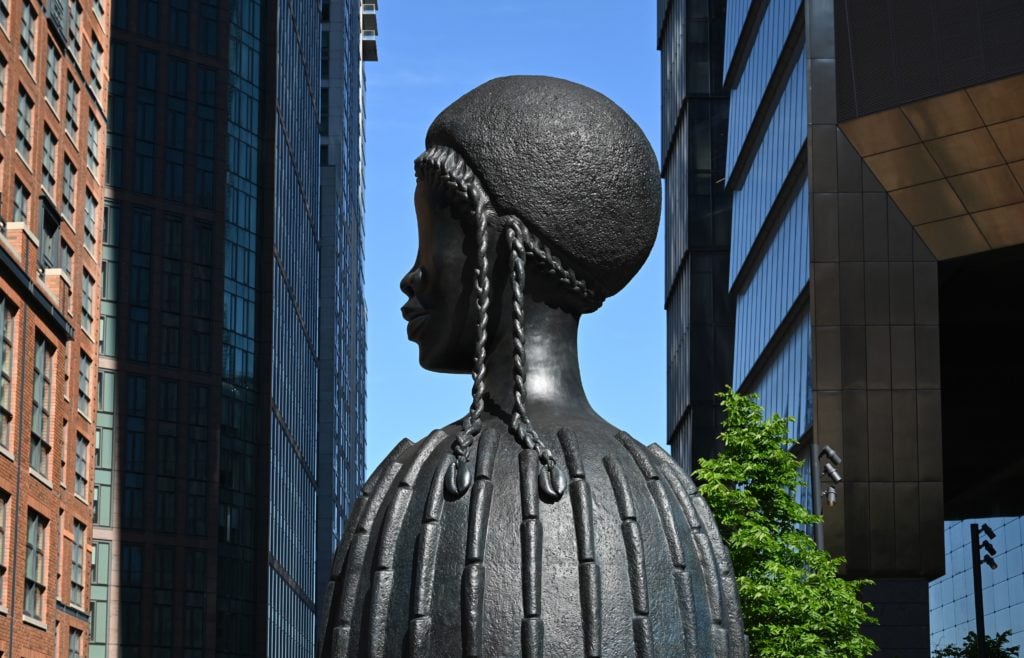
Simone Leigh, Brick House at the Spur, the last section of the original structure of the High Line to be converted into public space in New York. Photo by Timothy A. Clary/AFP/Getty Images.
Other prominent exhibitions include a solo outing at the Hammer Museum at UCLA in 2016 and a coveted slot in the 2019 Whitney Biennial, at the Whitney Museum of American Art in New York.
Leigh earned her bachelor’s degree in art and philosophy at Earlham College in Indiana in 1990. Her first job in New York was reproducing tiles for the subway at an architectural ceramics firm. Her career as an artist began to take off when she was chosen for the influential Studio Museum in Harlem residency in 2010.
Leigh’s work set a new auction record this March, with the $337,500 sale of her sculpture DECATUR (COBALT), according to the Artnet Price Database. Her top ten auction prices were all achieved in 2019 or 2020. Earlier this year, the artist joined Hauser & Wirth after working with New York’s Luhring Augustine since 2016 and Los Angeles’s David Kordansky since 2019.
“I was told by everyone I knew in ceramics there was no way I would ever be included in the contemporary art space,” Leigh told the New York Times in 2018. “Because I was largely ignored, I had a long time to mature without any kind of glare, which worked out for me quite well.”